Lenovo ThinkBook 14s Yoga review – stylish business-class convertible
 In case you’re wondering – yes, Lenovo is offering their classy business solutions in a convertible form factor, as well. It is called the ThinkBook 14s Yoga and aims to combine the best of both worlds.
In case you’re wondering – yes, Lenovo is offering their classy business solutions in a convertible form factor, as well. It is called the ThinkBook 14s Yoga and aims to combine the best of both worlds.
Now, there are a lot of 2-in-1s out there, and a large part of them actually comes from the Yoga subbrand. How would this notebook be different from the others? Well, for starters, it comes feature-packed with all of the security software and firmware usually paired with the ThinkBook series. In addition to that, there is Intel’s Tiger Lake processor lineup, maxing out with the Core i7-1165G7 – a very capable ULV processor, that delivers both computational, and graphics performance.
Additionally, this 14-incher has its own stylus, integrated into its chassis. So besides the security enhancements, you get the artistic ones too. We really hope that the 1080p IPS panel will be worth it, and won’t set the device back, as we saw with the Dell Inspiron 14 5406 2-in-1.
You can check the prices and configurations in our Specs System: https://laptopmedia.com/series/lenovo-thinkbook-14s-yoga/
Contents
Specs Sheet
- HDD/SSD
- up to 1000GB SSD
- M.2 Slot
- 2x M.2 PCIe x4 slots See photo
- RAM
- up to 40GB
- OS
- Windows 11 Home, Windows 11 Pro, Windows 10 Pro, Windows 10 Home, No OS
- Battery
- 60Wh, 4-cell, 60Wh
- Body material
- Aluminum
- Dimensions
- 320 x 216 x 16.9 mm (12.60" x 8.50" x 0.67")
- Weight
- 1.50 kg (3.3 lbs)
- Ports and connectivity
- 1x USB Type-C
- Thunderbolt 4
- 1x USB Type-C
- 3.2 Gen 2 (10 Gbps), Power Delivery (PD), DisplayPort
- 2x USB Type-A
- 3.2 Gen 1 (5 Gbps)
- HDMI
- 1.4b
- Card reader
- MicroSD
- Wi-Fi
- 802.11ax
- Bluetooth
- 5.1
- Audio jack
- 3.5mm Combo Jack
- Features
- Fingerprint reader
- Web camera
- 1MP Slim Camera
- Backlit keyboard
- Microphone
- Dual-Array Microphones
- Speakers
- 2x 2W, Dolby Audio
- Optical drive
- Security Lock slot
- Kensington Lock Slot
All Lenovo ThinkBook 14s Yoga configurations
What’s in the box?
Inside the package, you will find some paper manuals, as well as a 65W USB Type-C power brick.
Design and construction
All around the place, you will find anodized aluminum. It makes the laptop very rigid and we see very little, to no flex from either the chassis and the lid. Everything sounds good so far, but the laptop feels a bit heavy for a convertible with a weight of 1.50 kg. On the bright side, it’s pretty thin, as its profile stands at 16.9mm off the ground.
Interestingly, the lid opens with a single hand. In order to make the gripping easier, Lenovo has put a notch in the middle of the top bezel. Speaking of bezels, the sides and the top one are pretty thin, with the bottom being thicker, and having a strip of color-matching material in the lowest point. Here, we have Gorilla Glass protection, and an anti-fingerprint coating, which doesn’t prevent them from appearing, but makes it easier to clean the panel with a cloth. As we mentioned, there is a stylus that comes with this laptop, and it fits in a tray inside of its chassis.
Moving to the base, we find a backlit, spill-resistant keyboard with a rather long key travel and clicky feedback. Ultimately, it feels great for typing and we think it’s one of the strong points of this machine.
As for the touchpad, it’s not a bad unit, with its decent gliding, but we’ve seen more swift and accurate devices out there.
Expectedly, the speaker cutouts can be found on the bottom panel, where is the ventilation grill, as well. Hot air, respectively, gets blown away from the back of the notebook.
Ports
On the left side, you get a USB Type-C 3.2 (Gen. 2) port, mainly used for charging, then you get a Thunderbolt 4 connector (which is also capable of providing charge to the machine), an HDMI 1.4 connector, a USB Type-A 3.2 (Gen. 1) port, and an audio jack. Then, on the right, there’s one more USB Type-A 3.2 (Gen. 1) port, a MicroSD card reader, and the Power button, which doubles as a fingerprint reader.
Disassembly, upgrade options, and maintenance
To get inside of this device, you have to undo 10 Torx-head screws. After that, pry the bottom panel with a plastic tool and lift it away from the chassis.
In terms of cooling, we see two heat pipes, a heat spreader, and a pretty big fan.
This laptop features 8GB of soldered memory to its motherboard, as well as one SODIMM slot for expansion up to 40GB in total. As for the storage, there are two M.2 PCIe x4 slots.
Here, we see a 60Wh battery pack, that will power the laptop, when you’re away from the charger.
Display quality
Lenovo ThinkBook 14s Yoga features a Full HD IPS touchscreen display, model number BOE NV140FHM-N66 (LEN889B). Its diagonal is 14″ (35.56 cm), and the resolution – 1920 х 1080. Additionally, the screen ratio is 16:9, the pixel density – 157 ppi, their pitch – 0.161 x 0.161 mm. The screen can be considered Retina when viewed from at least 56 cm (from this distance, the average human eye can’t see the individual pixels).

It has comfortable viewing angles. We have provided images at 45 degrees to evaluate quality.
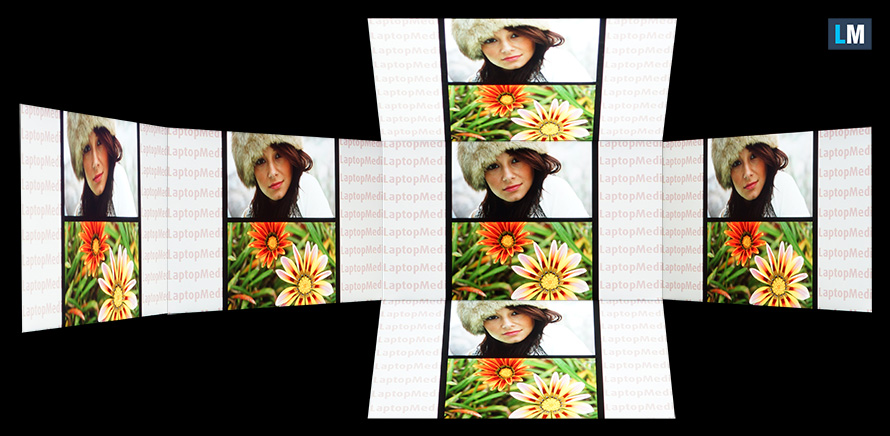
The maximum measured brightness is 315 nits (cd/m2) in the middle of the screen and 300 nits (cd/m2) average across the surface with a maximum deviation of 9%. The Correlated Color Temperature on a white screen and at maximum brightness is 6520K (average) – pretty much matching the 6500K optimum for sRGB.
In the illustration below you can see how the display performs from a uniformity perspective. The illustration below shows how matters are for operational brightness levels (approximately 140 nits) – in this particular case at 82% Brightness (White level = 141 cd/m2, Black level = 0.135 cd/m2).
Values of dE2000 over 4.0 should not occur, and this parameter is one of the first you should check if you intend to use the laptop for color-sensitive work (a maximum tolerance of 2.0 ). The contrast ratio is good – 1050:1.
To make sure we are on the same page, we would like to give you a little introduction to the sRGB color gamut and the Adobe RGB. To start, there’s the CIE 1976 Uniform Chromaticity Diagram that represents the visible specter of colors by the human eye, giving you a better perception of the color gamut coverage and the color accuracy.
Inside the black triangle, you will see the standard color gamut (sRGB) that is being used by millions of people on HDTV and on the web. As for the Adobe RGB, this is used in professional cameras, monitors, etc for printing. Basically, colors inside the black triangle are used by everyone and this is the essential part of the color quality and color accuracy of a mainstream notebook.
Still, we’ve included other color spaces like the famous DCI-P3 standard used by movie studios, as well as the digital UHD Rec.2020 standard. Rec.2020, however, is still a thing of the future and it’s difficult for today’s displays to cover that well. We’ve also included the so-called Michael Pointer gamut, or Pointer’s gamut, which represents the colors that naturally occur around us every day.
The yellow dotted line shows Lenovo ThinkBook 14s Yoga’s color gamut coverage.
Its display covers 100% of the sRGB/ITU-R BT.709 (web/HDTV standard) in CIE1976.
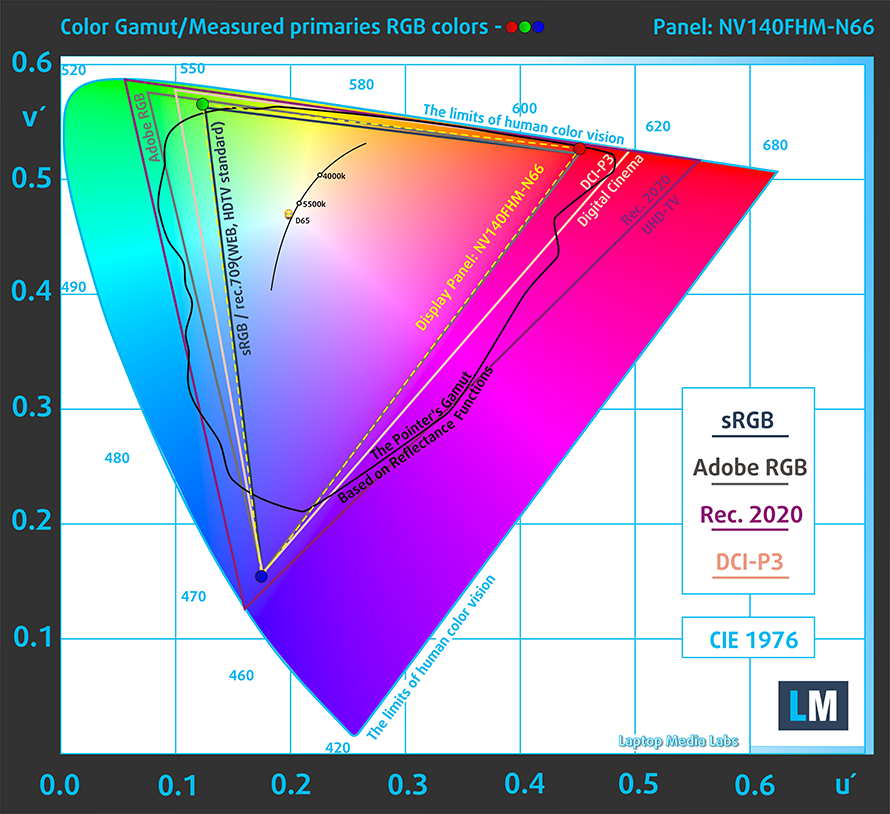
Our “Design and Gaming” profile delivers optimal color temperature (6500K) at 140 cd/m2 luminance and sRGB gamma mode.
We tested the accuracy of the display with 24 commonly used colors like light and dark human skin, blue sky, green grass, orange, etc. You can check out the results at factory condition and also, with the “Design and Gaming” profile.
Below you can compare the scores of Lenovo ThinkBook 14s Yoga with the default settings (left), and with the “Gaming and Web design” profile (right).
The next figure shows how well the display is able to reproduce really dark parts of an image, which is essential when watching movies or playing games in low ambient light.
The left side of the image represents the display with stock settings, while the right one is with the “Gaming and Web Design” profile activated. On the horizontal axis, you will find the grayscale, and on the vertical axis – the luminance of the display. On the two graphs below you can easily check for yourself how your display handles the darkest nuances but keep in mind that this also depends on the settings of your current display, the calibration, the viewing angle, and the surrounding light conditions.

Response time (Gaming capabilities)
We test the reaction time of the pixels with the usual “black-to-white” and “white-to-black” method from 10% to 90% and vice versa.
We recorded Fall Time + Rise Time = 18 ms.

After that, we test the reaction time of the pixels with the usual “Gray-to-Gray” method from 50% White to 80% White and vice versa between 10% and 90% of the amplitude.

Health impact – PWM / Blue Light
PWM (Screen flickering)
Pulse-width modulation (PWM) is an easy way to control monitor brightness. When you lower the brightness, the light intensity of the backlight is not lowered, but instead turned off and on by the electronics with a frequency indistinguishable to the human eye. In these light impulses, the light/no-light time ratio varies, while brightness remains unchanged, which is harmful to your eyes. You can read more about that in our dedicated article on PWM.
Lenovo ThinkBook 14s Yoga’s display does not use PWM for brightness adjustment. This makes it comfortable to use for extended periods of time.
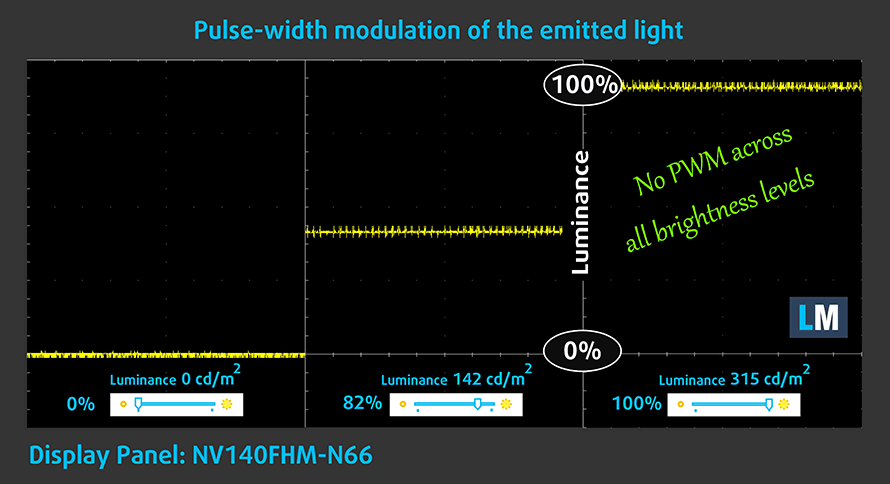
Blue light emissions
Installing our Health-Guard profile not only eliminates PWM but also reduces the harmful Blue Light emissions while keeping the colors of the screen perceptually accurate. If you’re not familiar with the Blue light, the TL;DR version is – emissions that negatively affect your eyes, skin, and your whole body. You can find more information about that in our dedicated article on Blue Light.
Conclusions
Lenovo ThinkBook 14s Yoga’s IPS panel has a Full HD resolution, a good contrast ratio, comfortable viewing angles, and covers the sRGB color gamut fully. Thankfully, it lacks PWM at every brightness level. Also, something very good, considering the nature of the laptop, our Gaming and Web design profile manages to make the color representation extremely accurate with an Average dE of only 0.5. This means artists, e-commerce retailers, and professionals in general, will be happy to work with the device.
Buy our profiles
Since our profiles are tailored for each individual display model, this article and its respective profile package are meant for Lenovo ThinkBook 14s Yoga configurations with 14.0″ BOE NV140FHM-N66 (LEN889B) (FHD, 1920 × 1080) IPS.
*Should you have problems with downloading the purchased file, try using a different browser to open the link you’ll receive via e-mail. If the download target is a .php file instead of an archive, change the file extension to .zip or contact us at [email protected].
Read more about the profiles HERE.
In addition to receiving efficient and health-friendly profiles, by buying LaptopMedia's products you also support the development of our labs, where we test devices in order to produce the most objective reviews possible.

Office Work
Office Work should be used mostly by users who spend most of the time looking at pieces of text, tables or just surfing. This profile aims to deliver better distinctness and clarity by keeping a flat gamma curve (2.20), native color temperature and perceptually accurate colors.

Design and Gaming
This profile is aimed at designers who work with colors professionally, and for games and movies as well. Design and Gaming takes display panels to their limits, making them as accurate as possible in the sRGB IEC61966-2-1 standard for Web and HDTV, at white point D65.

Health-Guard
Health-Guard eliminates the harmful Pulse-Width Modulation (PWM) and reduces the negative Blue Light which affects our eyes and body. Since it’s custom tailored for every panel, it manages to keep the colors perceptually accurate. Health-Guard simulates paper so the pressure on the eyes is greatly reduced.
Get all 3 profiles with 33% discount
Sound
Lenovo ThinkBook 14s Yoga’s speakers have decent quality, and they produce a relatively loud sound. However, there are deviations across the entire frequency spectrum.
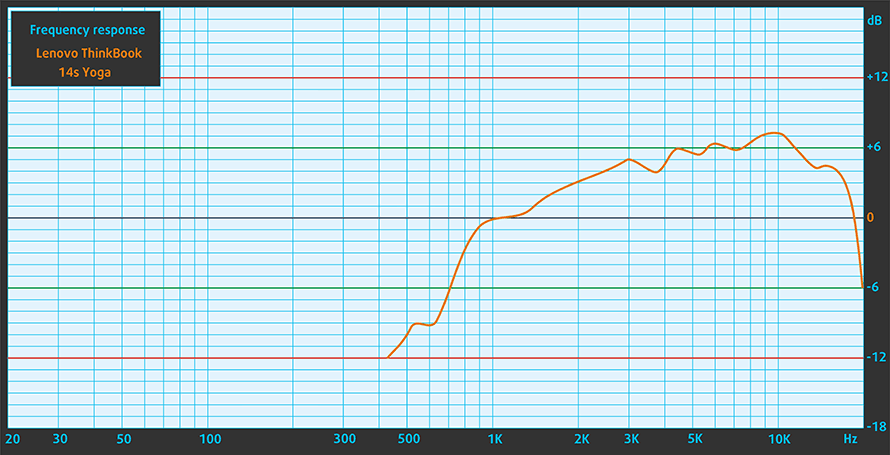
Drivers
All of the drivers and utilities for this notebook can be found here: https://pcsupport.lenovo.com/us/en/products/laptops-and-netbooks/thinkbook-series/thinkbook-14s-yoga-itl/downloads/driver-list
Battery
Now, we conduct the battery tests with Windows Better performance setting turned on, screen brightness adjusted to 120 nits, and all other programs turned off except for the one we are testing the notebook with. Here, we have a 60Wh battery pack that lasts for 11 hours and 57 minutes of Web browsing, and 9 hours and 7 minutes of video playback.
In order to simulate real-life conditions, we used our own script for automatic web browsing through over 70 websites.
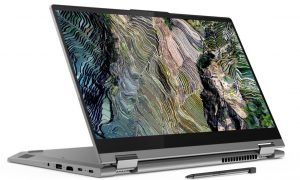
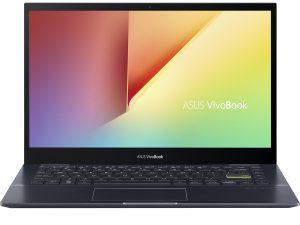
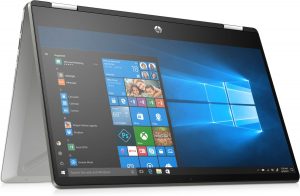
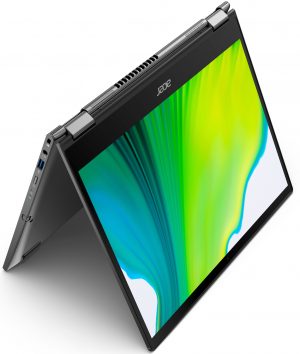
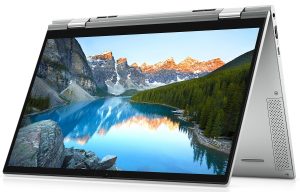
For every test like this, we use the same video in HD.





CPU options
Currently, this machine can be purchased with either the Core i3-1115G4, Core i5-1135G7, or Core i7-1165G7.
Results are from the Cinebench 20 CPU test (the higher the score, the better)
Results are from our Photoshop benchmark test (the lower the score, the better)
GPU options
The graphics options, on the other side, are limited to the CPU of choice. So you get the Iris Xe Graphics G4, Iris Xe Graphics G7 (80EU), or the Iris Xe Graphics G7 (96EU), respectively.
Results are from the 3DMark: Time Spy (Graphics) benchmark (higher the score, the better)
Results are from the 3DMark: Fire Strike (Graphics) benchmark (higher the score, the better)
Results are from the Unigine Superposition benchmark (higher the score, the better)
Gaming tests

| DOTA 2 | HD 1080p, Low (Check settings) | HD 1080p, Normal (Check settings) | HD 1080p, High (Check settings) |
|---|---|---|---|
| Average FPS | 53 fps | 31 fps | – fps |
Temperatures and comfort
Max CPU load
In this test we use 100% on the CPU cores, monitoring their frequencies and chip temperature. The first column shows a computer’s reaction to a short load (2-10 seconds), the second column simulates a serious task (between 15 and 30 seconds), and the third column is a good indicator of how good the laptop is for long loads such as video rendering.
Average core frequency (base frequency + X); CPU temp.
| Intel Core i5-1135G7 (15W TDP) | 0:02 – 0:10 sec | 0:15 – 0:30 sec | 10:00 – 15:00 min |
|---|---|---|---|
| Lenovo ThinkBook 14s Yoga | 3.52 GHz (B+47%) @ 94°C | 3.24 GHz (B+35%) @ 94°C | 2.63 GHz (B+10%) @ 75°C |
| Lenovo ThinkPad E15 Gen 2 | 3.35 GHz (B+40%) @ 90°C | 3.14 GHz (B+31%) @ 71°C | 2.57 GHz (B+7%) @ 64°C |
| HP ProBook 450 G8 | 3.73 GHz (B+55%) @ 90°C | 2.44 GHz (B+2%) @ 71°C | 2.09 GHz @ 64°C |
| Lenovo Yoga 7 (14) | 3.34 GHz (B+39%) @ 94°C | 2.97 GHz (B+24%) @ 94°C | 2.39 GHz @ 75°C |
| HP ProBook 650 G8 | 3.58 GHz (B+49%) @ 92°C | 2.44 GHz (B+2%) @ 75°C | 2.09 GHz @ 62°C |
| Acer Aspire 5 (A515-56G) | 3.68 GHz (B+53%) @ 83°C | 2.25 GHz @ 63°C | 2.15 GHz @ 62°C |
| Acer Aspire 5 (A514-54) | 3.54 GHz (B+48%) @ 87°C | 2.01 GHz @ 66°C | 2.03 GHz @ 67°C |
So, this laptop manages to extract a lot out of the Core i5-1135G7 initially, and even at the end of the 15-minute test, we got a frequency that was about 10% higher than the Base clock.
Comfort during full load
Interestingly, the laptop is very quiet under an extreme workload, and the temperature on the keyboard never exceeds 39°C.

Verdict
 Before we start with the good stuff, we would like to address what we didn’t like about this notebook. Our first, and main concern is weight. While 1.50 kilos is not that bad for a 14-inch laptop, you have to keep in mind that this is a convertible. And as such, you might use it as a tablet, more often, than as a traditional laptop. This will definitely put a strain on your hands after a slightly longer handheld session.
Before we start with the good stuff, we would like to address what we didn’t like about this notebook. Our first, and main concern is weight. While 1.50 kilos is not that bad for a 14-inch laptop, you have to keep in mind that this is a convertible. And as such, you might use it as a tablet, more often, than as a traditional laptop. This will definitely put a strain on your hands after a slightly longer handheld session.
Then, there is the iGPU performance. Although we had the Core i5 model, which packs an 80EU version of the Xe Graphics G7, hence – not the most powerful it offers, we feel that it was underperforming. If you want to get the maximum out of your machine, make sure you get a model that packs 2x 8GB of memory (or just upgrade it, yourself), as the dual-channel mode will improve your performance significantly.
Lenovo ThinkBook 14s Yoga’s IPS panel (BOE NV140FHM-N66) has a Full HD resolution, a good contrast ratio, comfortable viewing angles, and covers the sRGB color gamut fully. Thankfully, it lacks PWM at every brightness level. Also, something very good, considering the nature of the laptop, our Gaming and Web design profile manages to make the color representation extremely accurate with an Average dE of only 0.5. This means artists, e-commerce retailers, and professionals in general, will be happy to work with the device.
And the display of a 2-in-1 is the culprit of the entire operation. If you are interested in convertibles – the display is the first thing to look at. And here, Lenovo didn’t disappoint.
Also, thankfully, you get a pretty good battery life, with almost 12 hours of Web browsing and a bit over 9 hours of video playback. Not on the last place, of course, is the I/O which employs everything from a Thunderbolt 4 connector to regularly-sized USB Type-As and even a MicroSD card reader. In addition to that, you get Wi-Fi 6 support, as well as two M.2 PCIe x4 slots for storage.
Lenovo did also think about security. This is why they paired the laptop with a fingerprint reader and a privacy shutter on the camera.
As for the elephant in the room – the stylus, we are pretty positive that it’s not the best out there. But at the same time, it seems decent, with low latency. Actually, the main disadvantage here is the size (that’s what she said).
At the end of the day, though, given the excellent keyboard, and pretty good overall experience, we feel that the ThinkBook 14s Yoga is worth its money – only if you get the RAM SODIMM slot filled, so you can get the full advantage of your iGPU.
Pros
- Thunderbolt 4, Wi-Fi 6 connection, and a MicroSD card reader on board
- There are two M.2 PCIe slots, one RAM-SODIMM slot (up to 40GB of RAM in total) + it supports Wi-Fi 6
- Covers 98% of the sRGB color gamut and has accurate color representation with our Gaming and Web design profile (BOE NV140FHM-N66)
- Included stylus
- PWM-free display(BOE NV140FHM-N66)
- Great keyboard experience
- Good battery life
Cons
- Underperforming iGPU
- Feels a bit heavy in tablet mode
You can check the prices and configurations in our Specs System: https://laptopmedia.com/series/lenovo-thinkbook-14s-yoga/
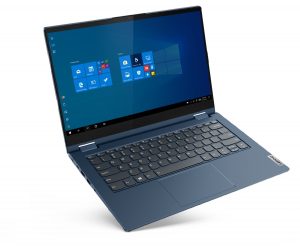

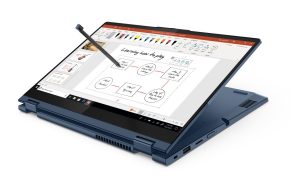
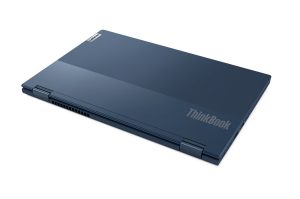

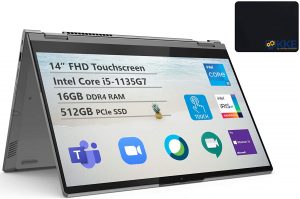
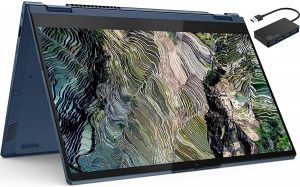
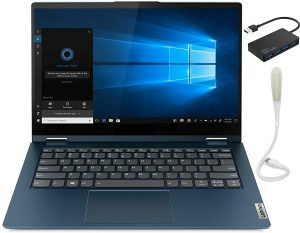
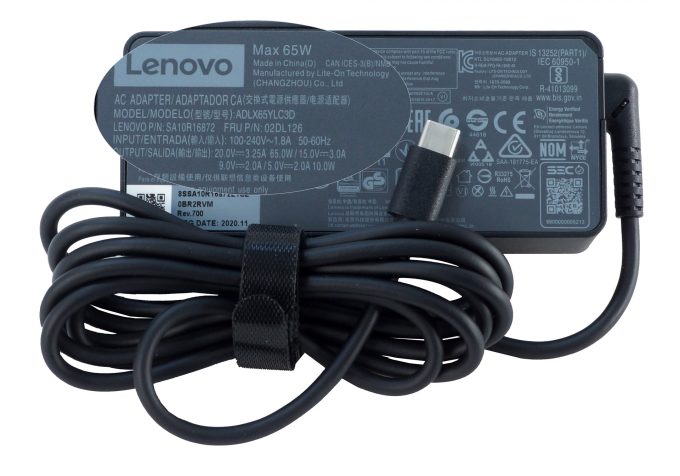

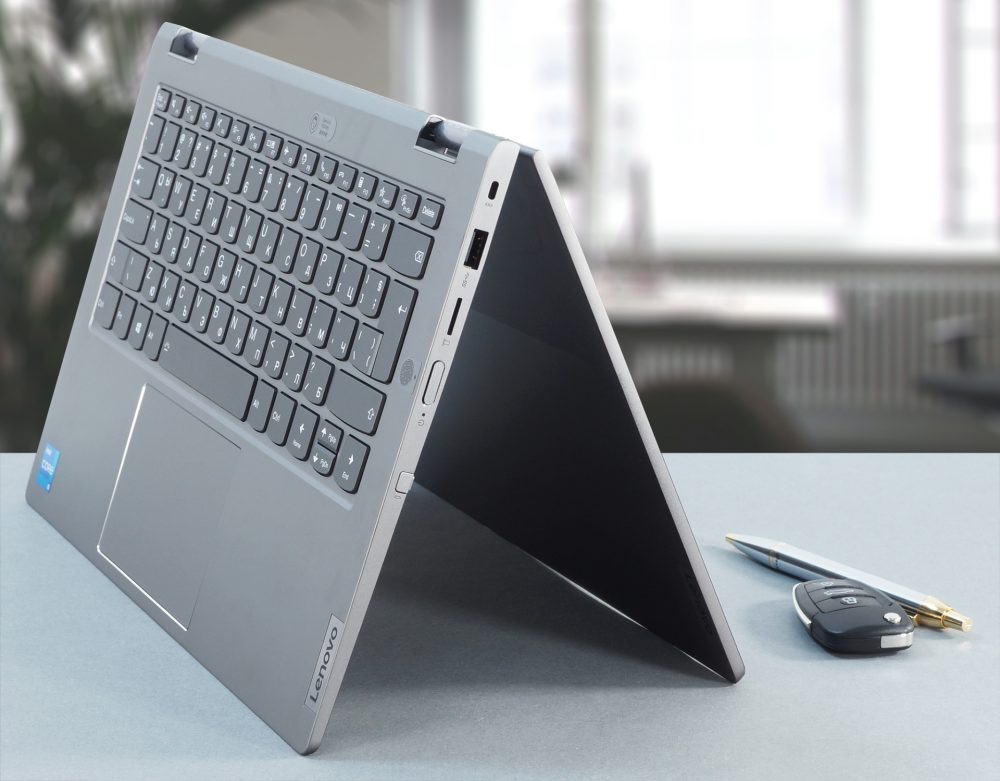
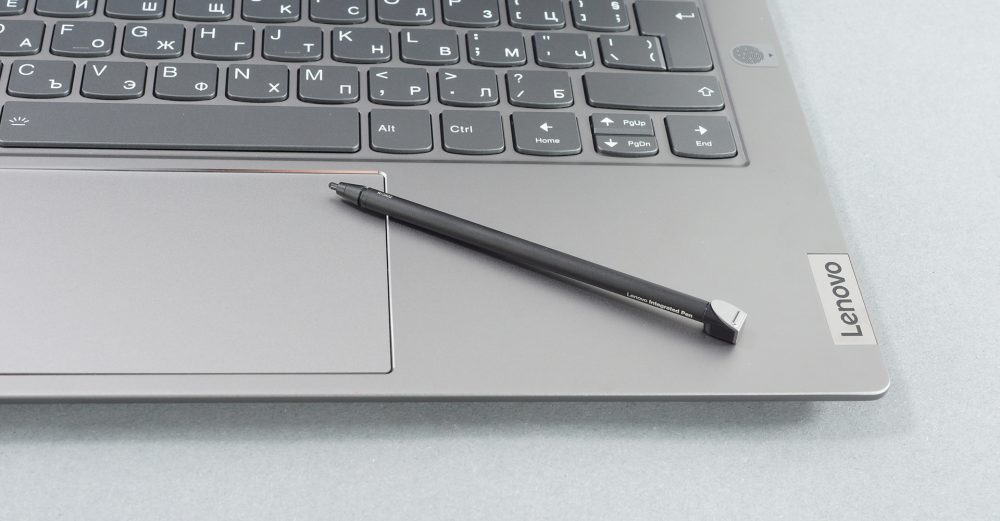

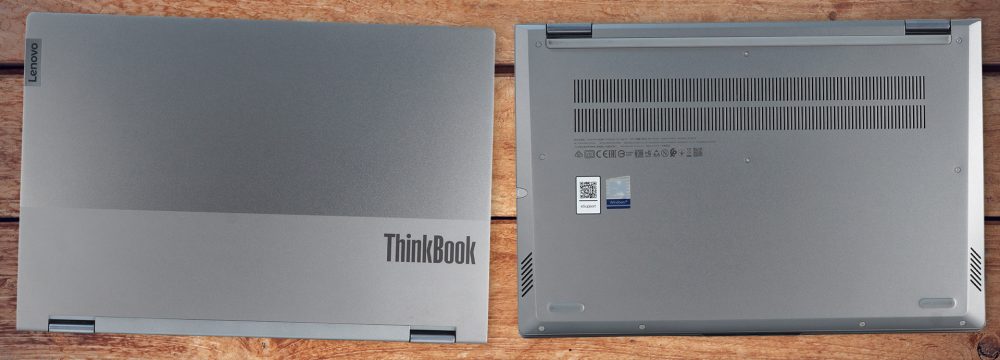


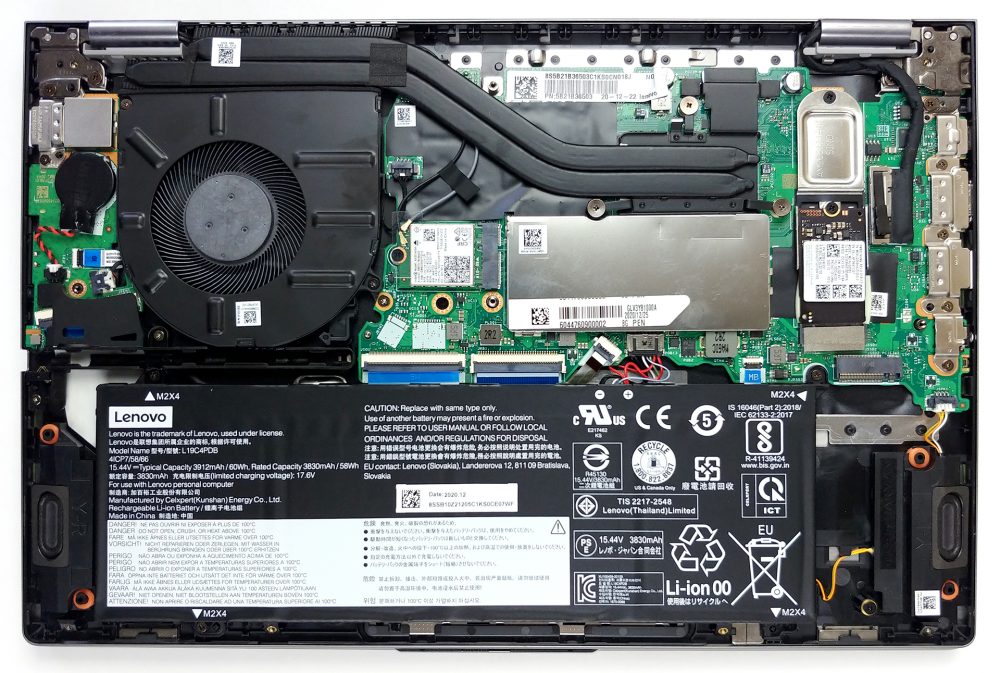
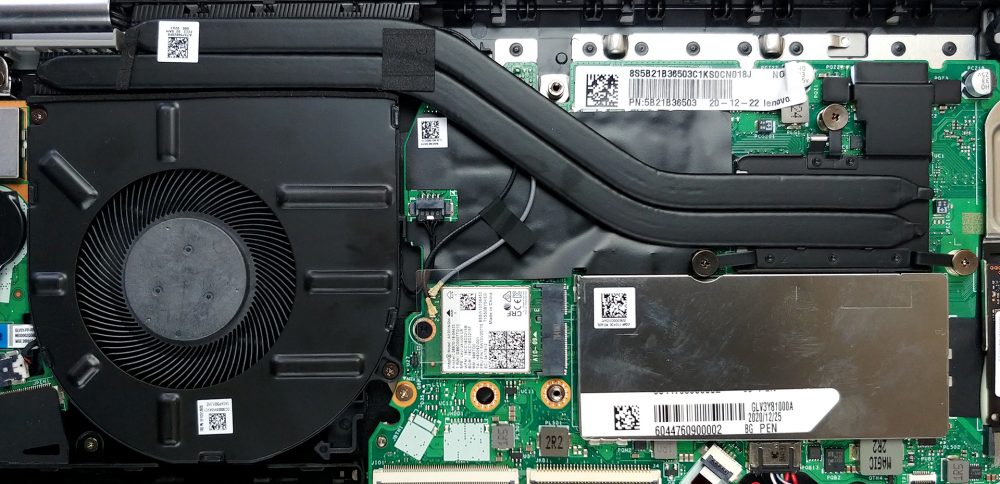
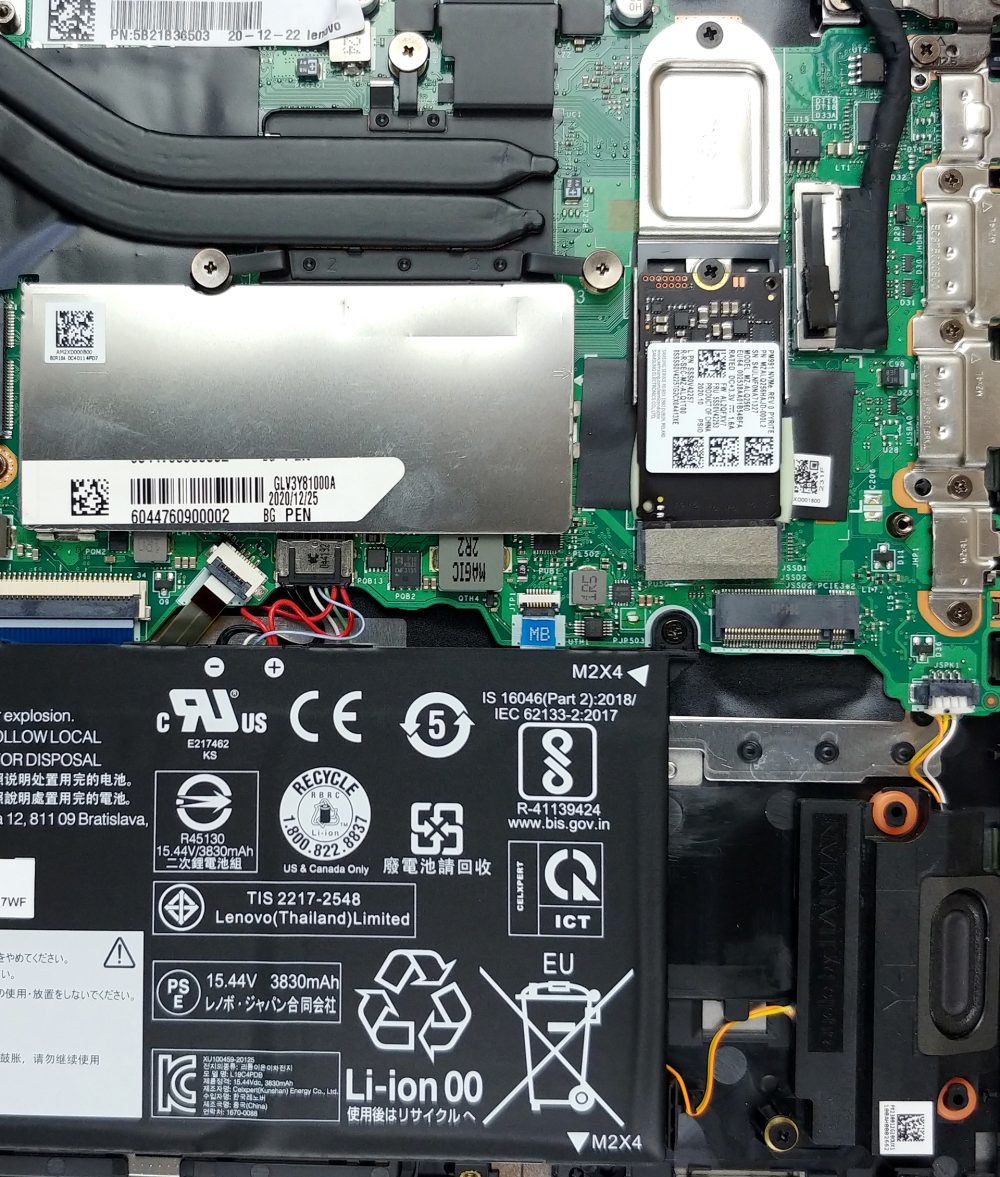
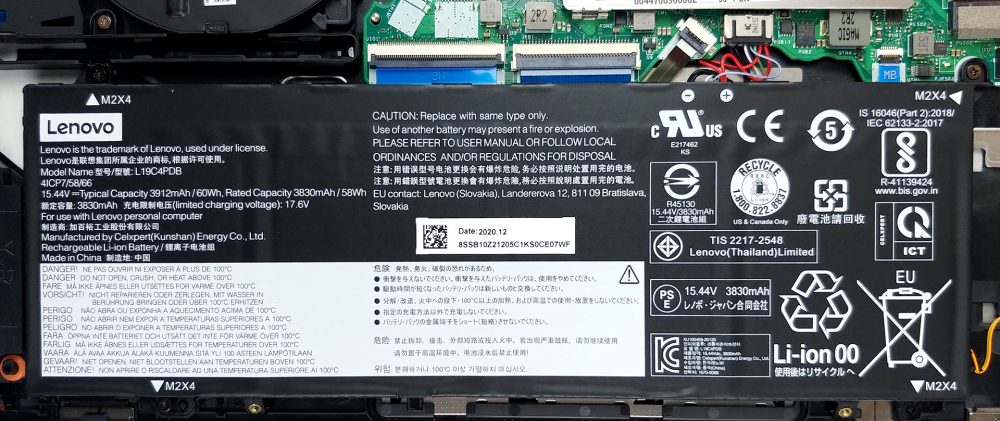
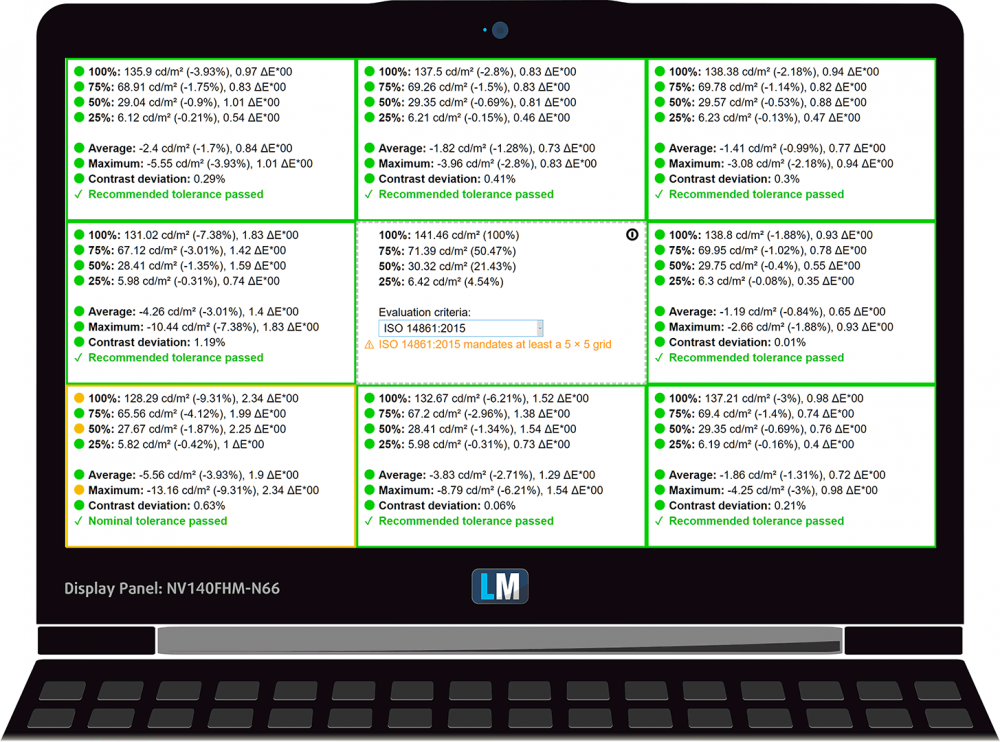
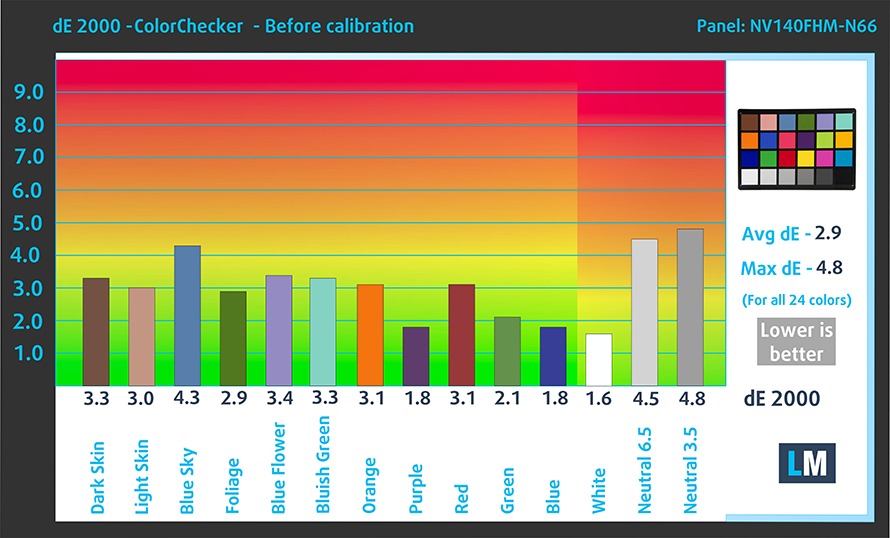
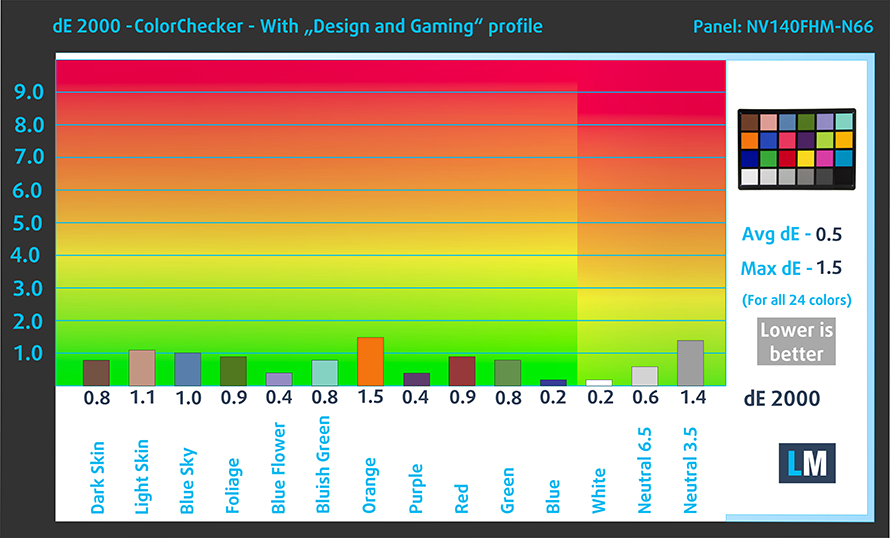

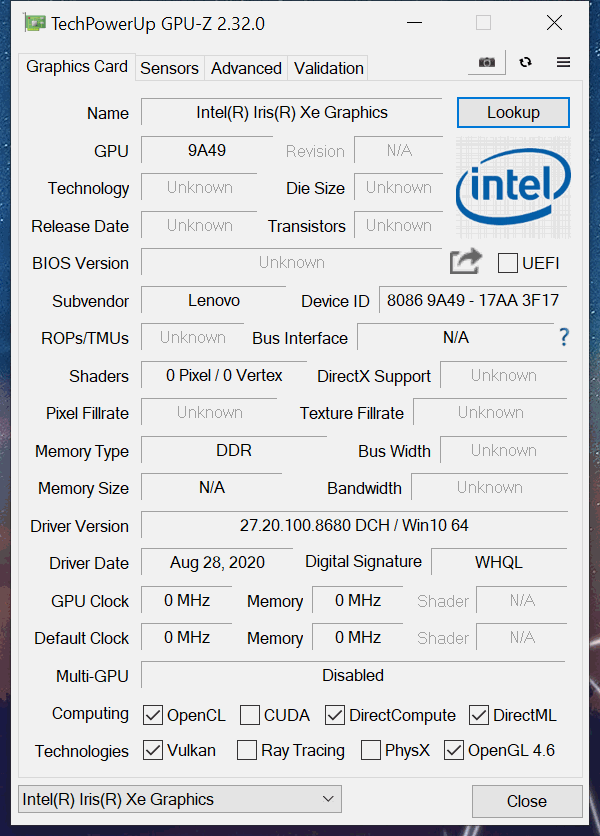








Interesting laptop overall, especially with this very quiet cooling system.
But looks like some display lottery from Lenovo here.
Notebookcheck review sample have Innolux N140HCG-EQ1 display with only 89% sRGB.
And I wish it has at least 16GB soldered RAM for 32GB in dual channel.
And Ryzen option would be also nice…